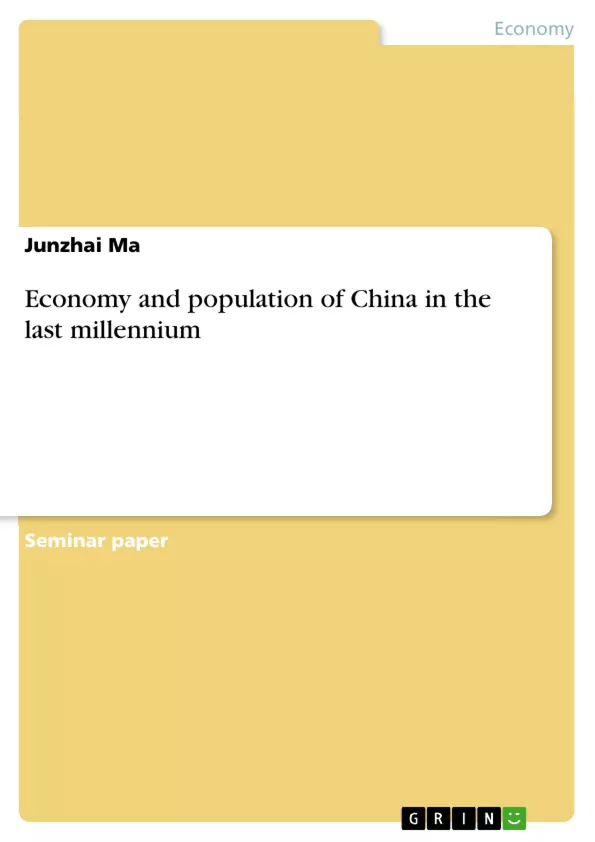This paper tries to investigate the development of population and economic development in china in the last millennium. There have been roughly three phases of development in China’s history. The first phase starts at the beginning of the last millennium till 1820, we call this agrarian civilization. As agrarian economy, China had been performing better than Europe until the song dynasty in the eleventh century. After that China had been stagnating for about six centuries until 1820 in respect of economy, although its economy scale had been able to accommodate an ever increasing population. The time thereafter till 1949 for China was the darkest time in its history, combined with humiliation of foreign supremacy, civil war, and natural and human disasters. Until the founding of people’s Republic of China, there was no national population control policy. From 1949 to 1976 the new republic of China has done its best first to industrialize the country, thus agriculture and light industry were neglected and living standards of the common people have not bettered substantially, as well as worsened by political upheavals. From 1978 till now with it opening to the western world, china’s economy has been catching up quickly, although the gap to the developed countries is still very large.
Inhaltsverzeichnis (Table of Contents)
- Introduction
- Literature Review and Data
- Agriculture-Economy and Population
- Economy and population: 1820 to 1949 darkest time in China's History
- Economy and Population from 1949 to now
- Statistic Test: Human Capital (Quality of Population ) and Economic Performance
- Conclusion
- References
Zielsetzung und Themenschwerpunkte (Objectives and Key Themes)
This paper explores the relationship between population growth and economic development in China over the past millennium. The study highlights the interplay between these factors, particularly in the context of China's transition from an agrarian to an industrial society.
- The development of China's population and economy through three distinct historical phases.
- The impact of the agrarian economy on population growth and economic stagnation in China.
- The challenges faced by China during its transition from an agrarian society to an industrialized nation.
- The role of population control policies in shaping China's economic trajectory.
- The comparison of China's economic performance with other developing countries.
Zusammenfassung der Kapitel (Chapter Summaries)
The paper begins with an introduction outlining the key themes and objectives of the study, including the three phases of economic and population development in China. Chapter 2 delves into the literature review and data sources used to analyze the historical trends. Chapter 3 examines the characteristics of an agrarian economy, focusing on its dependence on environmental conditions and the concept of a "high-level equilibrium trap." This chapter further examines the intensification of agriculture in China, including the introduction of new crops and multi-cropping practices.
Schlüsselwörter (Keywords)
This paper focuses on the relationship between population, economy, and agriculture in China. Key concepts include agrarian economies, population growth, economic development, industrialization, and population control policies. The analysis draws upon historical data and research regarding China's economic and social transformation over the past millennium.
- Quote paper
- Diplom-Kaufmann Junzhai Ma (Author), 2014, Economy and population of China in the last millennium, Munich, GRIN Verlag, https://www.grin.com/document/282514



